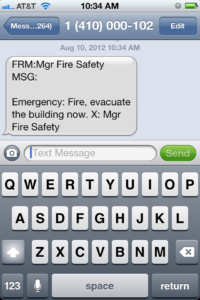Last week, I did a talk as part of YPO Innovation Week on “managing distributed innovation.” Effectively, this was about strategies and tactics for innovating using globally distributed teams. We have approximately 300 employees at Techstars and those people live and work in about 60 different cities around the world. The YPO group was very interested in one particular comment I made about how we communicate.
I said something like “It’s really important that the team have a universally understood prioritization of various communication channels.”
Tools like Slack, email, text messaging, and to-do lists are great. But what is the priority of each for your peers? Which of the 5,000 weekly emails should we respond to first? In what order? Should a slack message interrupt me now, or tomorrow? Or is next week ok? Or do I even need to check it regularly? If you call my cell phone without it being pre-arranged, should I assume it’s so important that I should step out of the meeting I’m in right now? How do I know?

The YPO group asked me if i would share how we do it, as one example. I figured why should I share it with them without sharing it with you nice people too? So, here goes. This is in “priority order”, from low to high, inside of Techstars.
Slack: In our company, Slack is not a required form of communication. It’s encouraged, but the rule of thumb is that you can’t expect a response there. Therefore, it’s very low priority. Nobody needs to feel compelled to check it constantly. Some individual teams have agreed to prioritize slack to mean “today”, but across the company outside of your individual team, there is no expectation that it is a priority channel or even a viewed channel.
Email: Email is assumed to be non-urgent. Everyone is expected to answer internal email within a week. If they’re out of the office for over a week, they should have an internal auto responder on so their peers know this.
Async Voice: Voxer is a tool that manages async voice very well. Most people have used WhatsApp or WeChat. Voice is an add on there and not encouraged, usually with a tiny microphone button. In Voxer, it’s about voice. Think of this as like leaving an instant voice mail for someone or for a group, where that voice mail turns into a conversation that is back and forth. This is a “today” channel for us at Techstars. It means “I have something I need to hear from you on today.” Like, before you go to sleep again, wherever you are in the world. Ideally, all Techstars employees clear Voxer before they’re totally offline for the night. We like this as a priority channel because you can hear the nuance in someones voice. It’s usually used for important and timely issues. The key if you adopt a tool like this is the “90/60 rule.” 90% of the time voice messages should be 60 seconds or less.
Text message: Inside Techstars, this means “This is urgent.” We target a response within a few hours. One note here: Something that may seem urgent to you may not really be urgent. Think about whether or not something gets really messed up if you don’t get a response today. Here’s an example of something that feels urgent but is not: You are setting up a meeting in 3 months and your boss wants it done today. The person you’re trying to arrange the meeting for is out of the office for the next 3 days. Do you text them? NO. You wait 3 days. It’s not going to make a difference. What feels urgent to you may not be urgent in reality.
Unscheduled phone call: This means “Super urgent.” Especially if I call twice, or text and then immediately call. I assume there is a building on fire somewhere, or something similar.
Don’t get hung up on how we prioritize the channels. The (hopefully) helpful thing is that everyone at your organization understands the priority and associated expectations of each internal communication channel. This helps manage remote teams in a way that keeps everyone as productive as possible.

